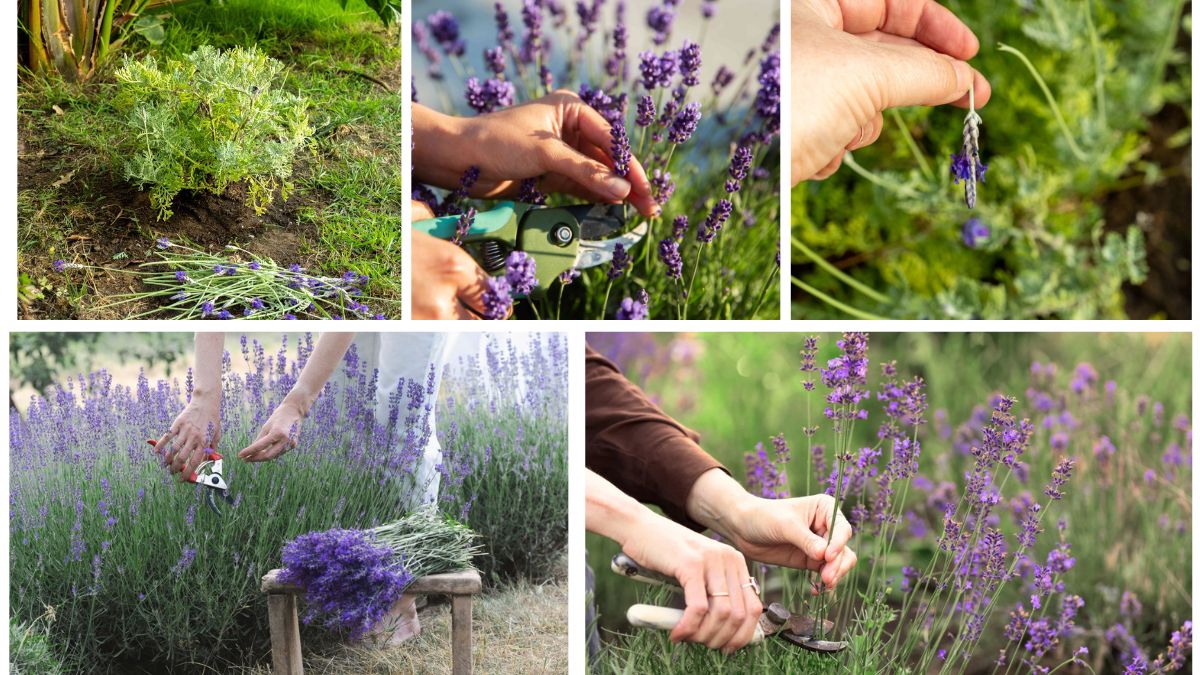Lavender is one of the most beloved plants for home gardens, prized for its calming fragrance, striking purple blooms, and endless uses—from aromatherapy and crafts to culinary delights. Beyond its beauty, lavender is also hardy and easy to maintain, thriving in sunny locations with well-drained soil. However, many gardeners face one challenge: keeping lavender from becoming woody and leggy over time. The secret to long-lasting, bushy, and healthy lavender is proper pruning.
Pruning lavender may seem intimidating at first, but it’s actually simple once you understand the timing and techniques. Done correctly, pruning helps the plant maintain its shape, encourages new growth, and produces more abundant blooms year after year. This step-by-step guide will walk you through everything you need to know about pruning lavender for continuous growth.
Why Pruning Lavender Is Essential
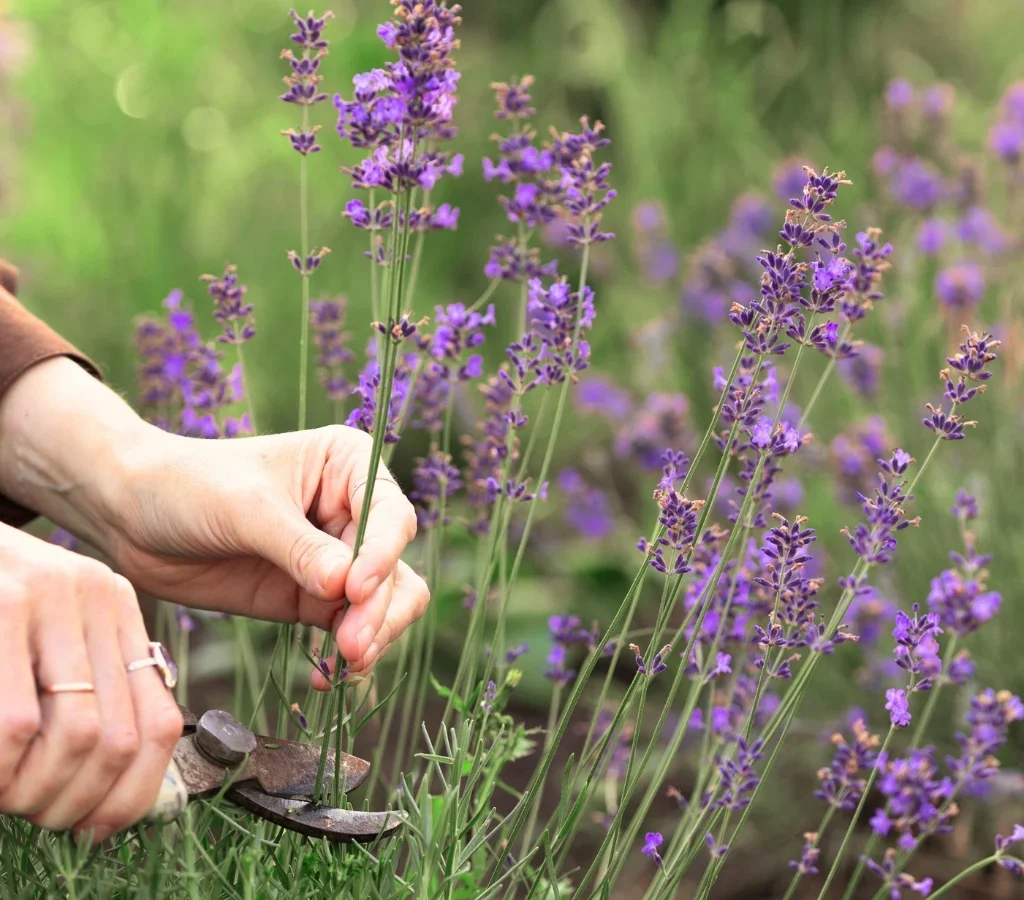
Unlike many plants that can be left alone, lavender requires consistent pruning to stay healthy. Without it, lavender tends to grow tall and spindly, developing a woody base that cannot regenerate new shoots. Over time, this results in fewer flowers, a scraggly appearance, and a shorter lifespan.
Here are the main benefits of pruning lavender regularly:
- Encourages Bushy Growth – Pruning promotes branching, which leads to a fuller, denser plant with more flowering stems.
- Prevents Woody Growth – Lavender naturally becomes woody at its base, but pruning delays this process and keeps the plant productive.
- Boosts Flower Production – Cutting back old stems encourages new shoots, which means more blooms in the next growing season.
- Maintains Shape – Pruning helps lavender stay compact and rounded instead of sprawling unevenly.
- Extends Plant Life – Proper care through pruning can help lavender thrive for 10 years or more.
When to Prune Lavender
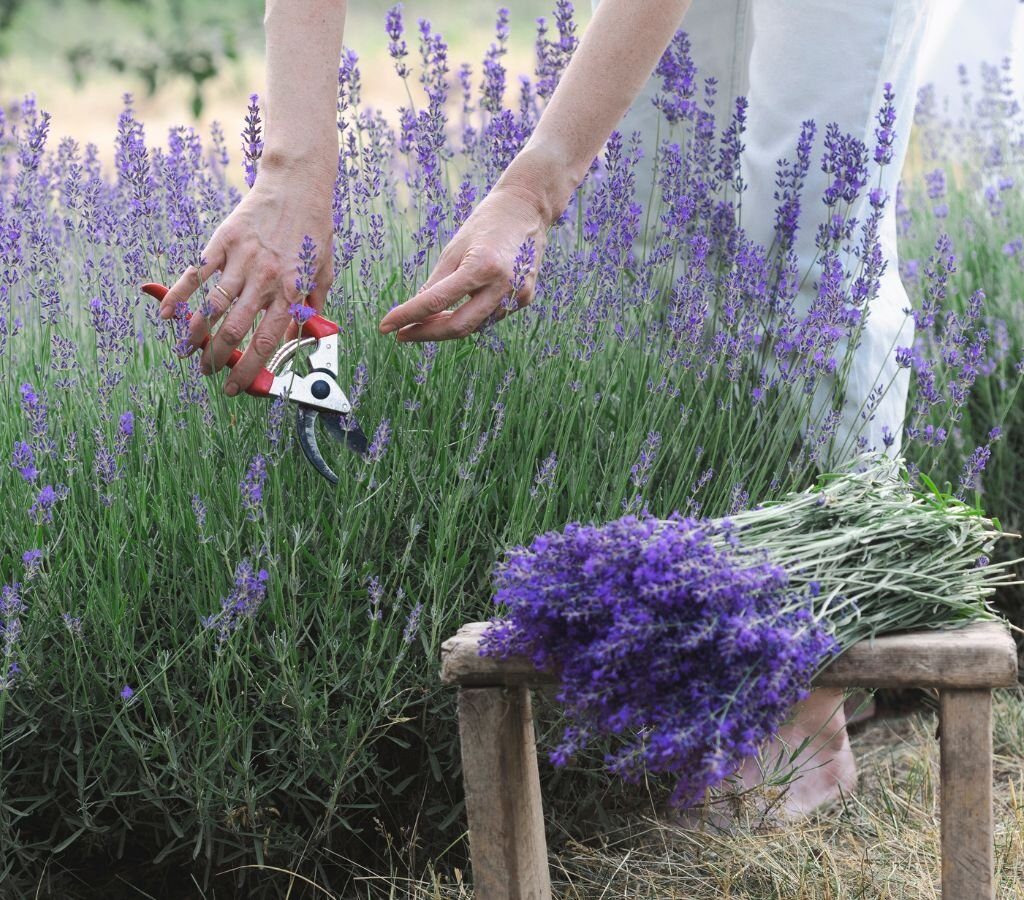
The key to successful lavender pruning lies in timing. Lavender should be pruned twice a year for the best results:
- Light Pruning in Early Spring
- As new growth begins after winter, give your lavender a gentle trim to remove any dead or damaged stems.
- This encourages strong new shoots and prepares the plant for the flowering season.
- Hard Pruning After Flowering (Late Summer to Early Fall)
- Once the main flowering season ends, prune your lavender more heavily.
- This is the most important pruning of the year, as it keeps the plant compact and prevents woody growth.
Important: Never cut lavender down to bare wood. Unlike some shrubs, lavender cannot sprout from old woody stems. Always leave a few inches of green growth above the woody base.
Tools You’ll Need
Pruning lavender doesn’t require fancy equipment—just a few basic tools:
- Sharp pruning shears or scissors – Clean cuts reduce the risk of disease.
- Gloves – Lavender can be rough on the skin, and gloves also protect from sticky sap.
- Bucket or bag – For collecting trimmings (you can even dry them for sachets or crafts).
Step-by-Step Guide to Pruning Lavender
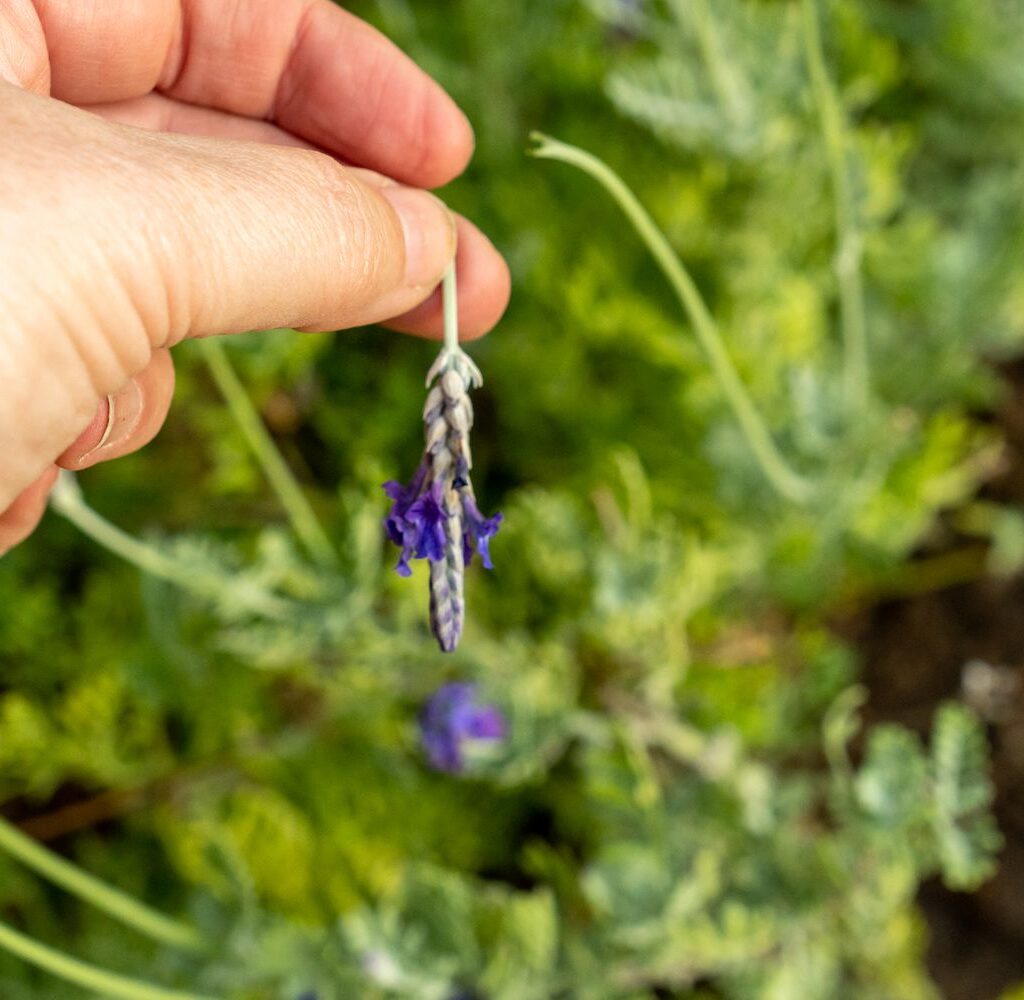
Here’s a practical step-by-step method to prune your lavender correctly for continuous growth:
Step 1: Inspect the Plant
Before pruning, look closely at your lavender. Identify dead stems, weak shoots, and areas of uneven growth. Locate the woody base and note where fresh green growth starts.
Step 2: Remove Dead or Damaged Stems
Start by cutting off any stems that are brown, dry, or broken. This clears space for new growth and improves airflow around the plant.
Step 3: Shape the Plant
Using your pruning shears, trim the stems back by about one-third of their length after flowering. Aim to give the lavender a rounded, dome-like shape. This ensures sunlight reaches all sides evenly and prevents an open, leggy center.
Step 4: Avoid Cutting Into Old Wood
Always leave at least 2 inches of green growth above the woody part of the plant. Cutting into bare wood will prevent regrowth and can shorten the plant’s life.
Step 5: Light Spring Trim
In early spring, just before new growth accelerates, give your lavender a light trim to tidy its shape and encourage bushiness. Remove any weak stems left from winter damage.
Lavender Varieties and Pruning Needs
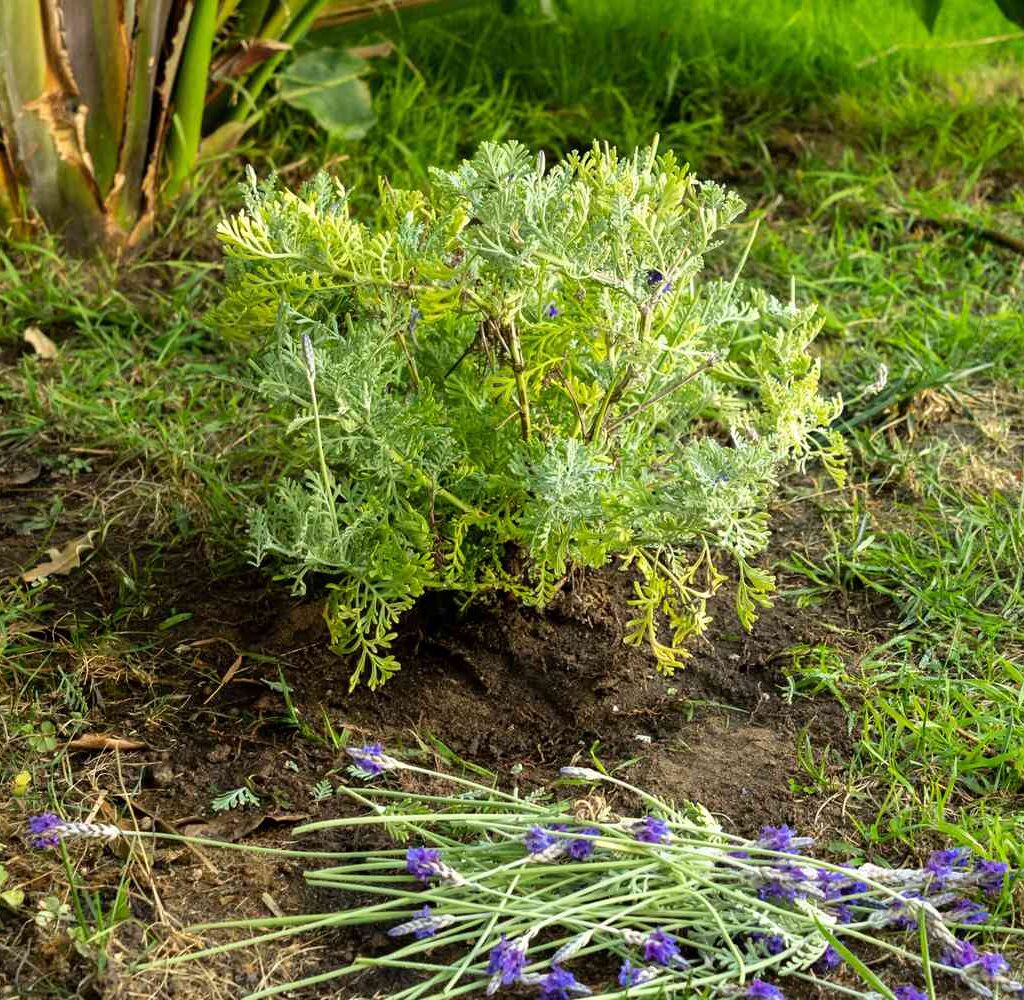
Different types of lavender have slightly different pruning requirements. Knowing your variety ensures you prune correctly:
- English Lavender (Lavandula angustifolia)
- The most common garden lavender.
- Prune lightly in spring, then harder after flowering.
- Responds well to pruning and can last many years with proper care.
- French Lavender (Lavandula dentata)
- Blooms earlier and longer than English lavender.
- Requires lighter, more frequent pruning throughout the season.
- Spanish Lavender (Lavandula stoechas)
- Known for its “rabbit ear” flower heads.
- Prune lightly but consistently after each flush of flowers to extend blooming.
- Hybrid Lavenders (Lavandins)
- Larger and less hardy than English lavender.
- Prune hard after flowering but avoid cutting into woody sections.
Tips for Successful Lavender Pruning
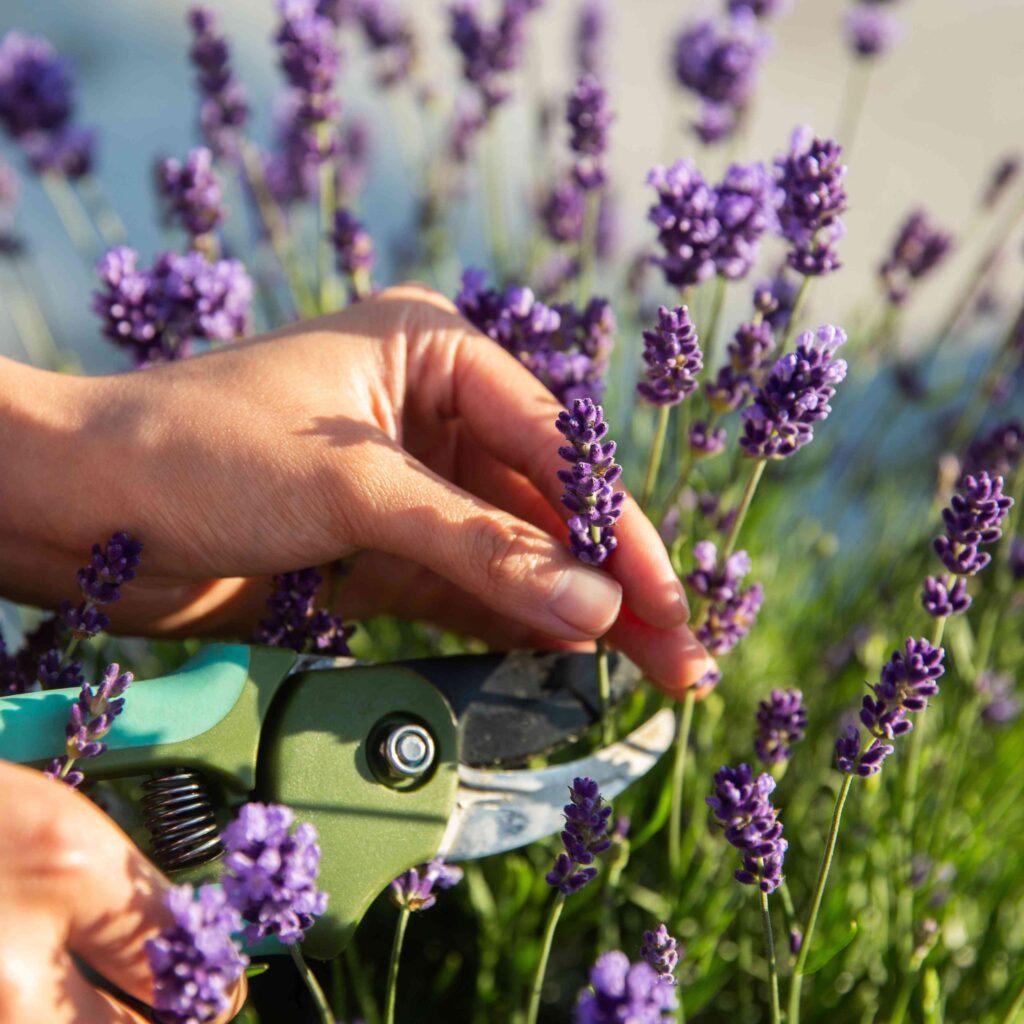
- Use Clean Tools – Disinfect shears before pruning to prevent spreading disease.
- Work on Dry Days – Wet conditions increase the risk of fungal infections.
- Don’t Over-Prune Young Plants – In the first year, only pinch back tips to encourage branching.
- Harvest Flowers at the Right Time – Cut blooms when they’re half-open for the best fragrance and oil content. This doubles as light pruning.
- Mulch Sparingly – Lavender dislikes too much moisture; avoid heavy mulching around the base.
What to Do with Lavender Trimmings
Pruning doesn’t mean waste! Lavender cuttings can be repurposed in many creative ways:
- Dry for Sachets – Fill small fabric bags with dried lavender to scent drawers.
- Make Wreaths or Decorations – Dried lavender stems add rustic charm.
- Create Homemade Potpourri – Mix with dried roses, citrus peels, or herbs.
- Propagate New Plants – Use semi-ripe cuttings from your trimmings to grow new lavender plants.
Common Mistakes to Avoid
Even experienced gardeners make mistakes when pruning lavender. Avoid these pitfalls:
- Cutting into Woody Stems – This can kill the plant. Always leave green growth.
- Pruning Too Late in Fall – This prevents the plant from hardening before winter.
- Neglecting Regular Pruning – Skipping pruning even one season can make the plant leggy.
- Overwatering After Pruning – Lavender prefers drier conditions, especially after being cut back.
Conclusion
Pruning lavender is less about strict technique and more about consistency. By trimming your plants at the right times—lightly in spring and more heavily after flowering—you’ll keep them compact, healthy, and bursting with blooms for many years. Remember never to cut into woody stems, always shape into a mound, and use the fragrant trimmings creatively.
With proper pruning, your lavender won’t just survive; it will thrive, rewarding you with continuous growth, abundant flowers, and that unmistakable soothing fragrance season after season.
So grab your shears, step into the garden, and give your lavender the care it deserves. In return, you’ll enjoy bright blooms, aromatic air, and a stunning plant that stands the test of time.
